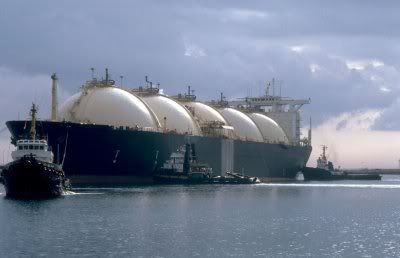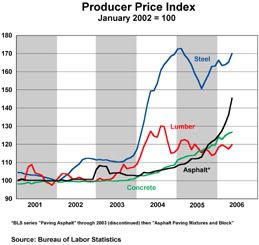European Parliament approves new science budget: energy research gets small share
Quicknote bioenergy science
 The European Parliament has approved the €54 billion (US$71.6 billion) plan to boost science research in Europe as part of the so-called Lisbon Strategy aimed at strengthening economic growth, competitiveness and employment in the Union. The Framework Programme 7 (FP7) is designed to support several priority areas of research.
The European Parliament has approved the €54 billion (US$71.6 billion) plan to boost science research in Europe as part of the so-called Lisbon Strategy aimed at strengthening economic growth, competitiveness and employment in the Union. The Framework Programme 7 (FP7) is designed to support several priority areas of research.
Of the different research categories [interactive map], information technology gets the biggest chunk of funding, with a €9.1 billion budget, while research into climate change and energy have received a comparatively small amount of funding in the plan.
The Parliament gave the go-ahead to the plan on Thursday at its second reading. FP7 is due to be formally adopted by the EU on 5 December. The programme is due to run from 2007 to 2013.
It is difficult to analyse what this budget allocation means for the development of Europe's bioeconomy, but if the science fields that make up this broad concept are combined (energy, environment, transport and biotechnology), then the funding is considerable.
Euratom, the European Atomic Energy Community (which is an institution formally distinct from the European Community), gets €2.7 billion for nuclear research, including additional funds for ITER, the fusion project.
Over the coming days we will be researching the details of the budgets as they relate to biofuels, bioenergy and international cooperation on this front [entry ends here].
 bioenergy :: biofuels :: energy :: sustainability :: climate change :: bioeconomy :: Framework Programme 7 :: science budget :: Lisbon Strategy :: European Parliament :: European Union ::
bioenergy :: biofuels :: energy :: sustainability :: climate change :: bioeconomy :: Framework Programme 7 :: science budget :: Lisbon Strategy :: European Parliament :: European Union ::
Article continues
 The European Parliament has approved the €54 billion (US$71.6 billion) plan to boost science research in Europe as part of the so-called Lisbon Strategy aimed at strengthening economic growth, competitiveness and employment in the Union. The Framework Programme 7 (FP7) is designed to support several priority areas of research.
The European Parliament has approved the €54 billion (US$71.6 billion) plan to boost science research in Europe as part of the so-called Lisbon Strategy aimed at strengthening economic growth, competitiveness and employment in the Union. The Framework Programme 7 (FP7) is designed to support several priority areas of research.Of the different research categories [interactive map], information technology gets the biggest chunk of funding, with a €9.1 billion budget, while research into climate change and energy have received a comparatively small amount of funding in the plan.
The Parliament gave the go-ahead to the plan on Thursday at its second reading. FP7 is due to be formally adopted by the EU on 5 December. The programme is due to run from 2007 to 2013.
It is difficult to analyse what this budget allocation means for the development of Europe's bioeconomy, but if the science fields that make up this broad concept are combined (energy, environment, transport and biotechnology), then the funding is considerable.
Euratom, the European Atomic Energy Community (which is an institution formally distinct from the European Community), gets €2.7 billion for nuclear research, including additional funds for ITER, the fusion project.
Over the coming days we will be researching the details of the budgets as they relate to biofuels, bioenergy and international cooperation on this front [entry ends here].
 bioenergy :: biofuels :: energy :: sustainability :: climate change :: bioeconomy :: Framework Programme 7 :: science budget :: Lisbon Strategy :: European Parliament :: European Union ::
bioenergy :: biofuels :: energy :: sustainability :: climate change :: bioeconomy :: Framework Programme 7 :: science budget :: Lisbon Strategy :: European Parliament :: European Union ::Article continues
 -------------------
-------------------
 Spanish company Ferry Group is to invest €42/US$55.2 million in a project for the production of biomass fuel pellets in Bulgaria.
The 3-year project consists of establishing plantations of paulownia trees near the city of Tran. Paulownia is a fast-growing tree used for the commercial production of fuel pellets.
Spanish company Ferry Group is to invest €42/US$55.2 million in a project for the production of biomass fuel pellets in Bulgaria.
The 3-year project consists of establishing plantations of paulownia trees near the city of Tran. Paulownia is a fast-growing tree used for the commercial production of fuel pellets.


 Building roads, railroads, canals and pipelines is a very expensive affair. And precisely because of rising energy prices it is becoming ever more expensive: over the past years, both asphalt, concrete and steel prices have risen to all-time highs (see graph), with the result that governments in the South are even more reluctant to build those infrastructures. The result is that rural communities remain cut off from markets, cannot sell any products, and ultimately sink deeper into poverty. The result: young people migrate from the country-side to the mega-cities and mega-slums, and the agricultural potential of the rural areas declines even further. A vicious circle.
Building roads, railroads, canals and pipelines is a very expensive affair. And precisely because of rising energy prices it is becoming ever more expensive: over the past years, both asphalt, concrete and steel prices have risen to all-time highs (see graph), with the result that governments in the South are even more reluctant to build those infrastructures. The result is that rural communities remain cut off from markets, cannot sell any products, and ultimately sink deeper into poverty. The result: young people migrate from the country-side to the mega-cities and mega-slums, and the agricultural potential of the rural areas declines even further. A vicious circle. In the coming months, the South African government is expected to publish its long-awaited bioenergy policy. The country is looking to develop biofuels to give new life to farming and see the sector through recent hard times, according to an official involved in drawing up the proposal.
In the coming months, the South African government is expected to publish its long-awaited bioenergy policy. The country is looking to develop biofuels to give new life to farming and see the sector through recent hard times, according to an official involved in drawing up the proposal.







Thursday, November 30, 2006
China to subsidize and protect bioenergy sector
Under the new policies, bioenergy enterprises should set up risk reserves, which will be used to offset their losses when the oil price is low. When the oil price is low for a sustained period, a government subsidy regime will be triggered to cover the losses of enterprises.
Note: this mechanism comes close to the 'contingency tax' proposed by Indian-American venture capitalist Vinod Khosla, a major biofuel investor. In a white paper [*.doc] from his hand, he wrote that such a tax is needed to deter deliberate and provocative oil price-cutting by the oil industry, which would destroy biofuel investments. It would come into effect at a pre-determined level – say, $40 per barrel. The tax would in effect set a floor price below which oil could not be sold, for any oil sold at lower than the floor level would have the tax added to it. The scheme would act as a windfall tax in reverse.
The Chinese government will also provide subsidies to developers of raw material supply bases for the bioenergy and bioproducts industries, particularly those using land that is currently classified as 'non-arable'. Subsidies will also be available to model projects that are resulting in significant technological innovations.
The bioenergy industry is seen as being of national importance to China's environmental protection, rural development, in addition to being a new source of growth for the economy, an NDRC official said. After years of trials in selected provinces, the government has begun pouring huge investment into the sector. Contrary to what many in the West think, the People's Republic is still very much an agrarian society, with more than 50% of all Chinese people still being employed in the agricultural sector today. In this context, it is not surprising to read that a single biofuel mega-project is projected to lift 1.1 million farmers out of poverty:
The country produced 1.02 million tons of bioethanol from corn and other raw materials in 2005. The ethanol is added to petrol at a ratio of 1:10 for use in automobiles. The government estimates that by 2010, gasoline with ethanol mixed in will account for half of China's total petrol consumption.
Large firms, such as the China National Petroleum Corporation (CNPC) and the China National Cereals, Oils and Foodstuffs Corp (COFCO), have announced ambitious plans for bioenergy investments.
CNPC has signed an agreement with the government of Sichuan Province in southwest China to develop facilities to produce 600,000 tons of automotive-grade ethanol from sweet potatoes each year and 100,000 tons bio-diesel made from the seeds of the jatropha curcas tree.
COFCO said in October it would invest one billion yuan (126 million U.S. dollars) to build a major ethanol plant in Guangxi region, also in southwest China. The plant, with a capacity of 400,000 tons, will lift 1.1 million farmers out of poverty by growing cassava as the raw material for the plant, said Yue Guojun, head of COFCO's biochemical and bioenergy division.
China's new policies were jointly issued by the NDRC, the ministries of finance and agriculture, the State Administration of Taxation, the State Forestry Administration.
Article continues
posted by Biopact team at 7:53 PM 0 comments links to this post